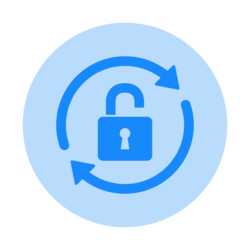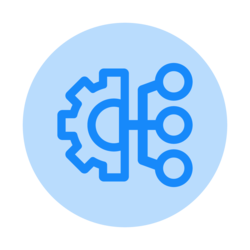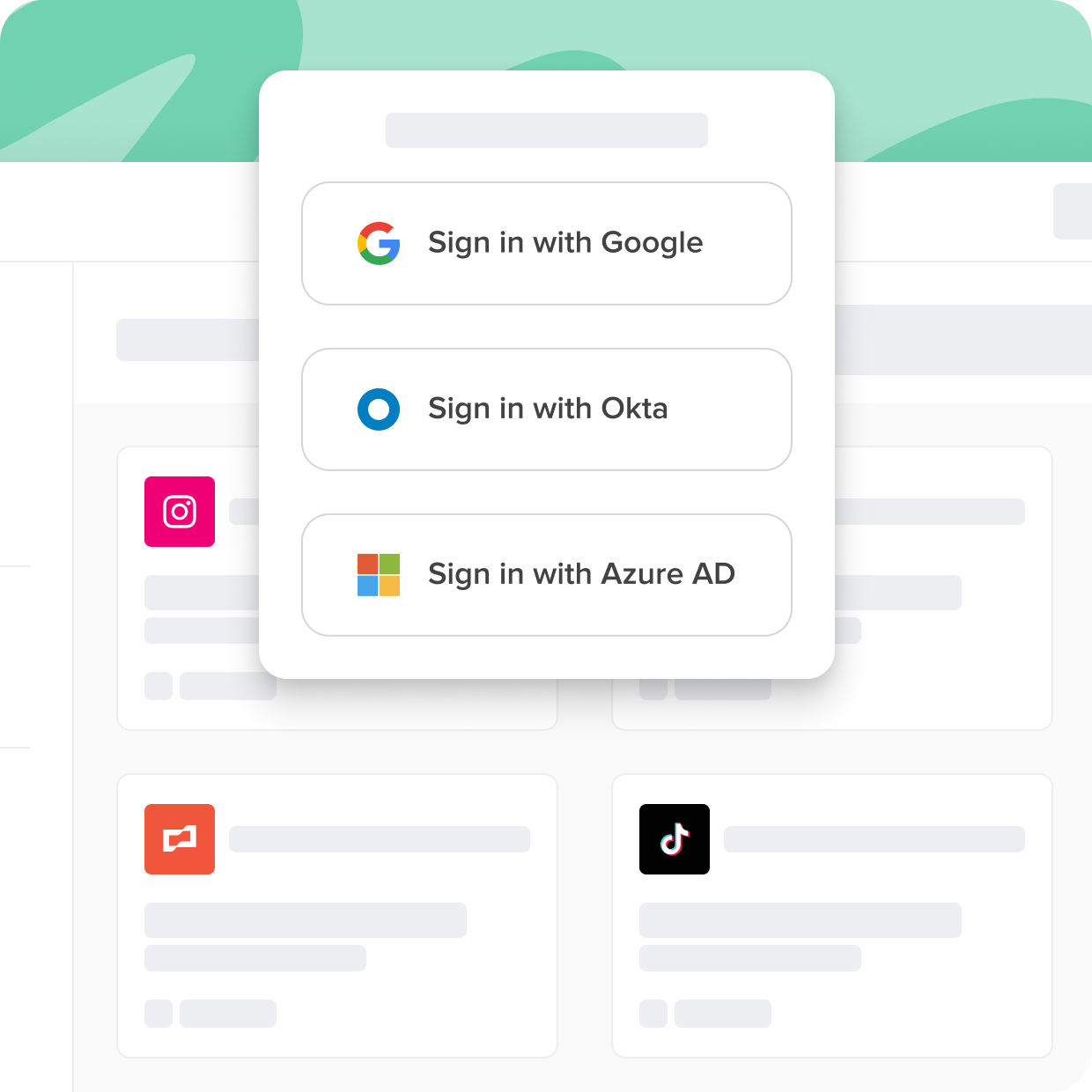Identity and access management (IAM) is like a set of rules and tools that control who can access what in a company's computer system. Single sign-on (SSO) is a handy tool within IAM that lets employees use one login to get into many different applications.
Unfortunately, many corporate applications don't support the SSO standard and can't reap all the benefits. The applications that fall into this category are best called "nonfederated." Nonfederated applications are a new category that is becoming increasingly challenging for businesses to manage and secure effectively, yet increasingly critical for businesses to succeed.
Cerby connects all of your apps to your SSO tools, even if they don't support the SSO standard. In this guide, you'll learn about different SSO tools, the challenges, and the players.
Streamline Access With Single Sign-On
Not all apps are created equal. Some come with security gaps and complexities that can hinder user adoption and put sensitive data at risk. With Cerby, you can ensure secure and seamless access to all your applications, regardless of their support for standards like SSO.
With Cerby You Can

Close the identity gap

Universally enforce 2FA

Eliminate the SSO tax
Identity And Access Management System
In today's digital age, the importance of identity and access management systems (IAM) cannot be overstated. The increasing number of cyber-attacks and data breaches have made it essential for businesses to implement robust IAM solutions to safeguard their sensitive data and prevent unauthorized access. Identity management tools play a crucial role in ensuring that only authenticated and authorized individuals have access to critical business resources. These tools provide a centralized platform to manage user identities, access rights, and permissions across various applications and systems.
However, identity management alone is not enough to secure an organization's entire technology stack. Organizations are struggling to mitigate cybersecurity risks associated with shared accounts. Half of the respondents from the Ponemon Institute’s study indicated that their organization’s access management strategy allows employees to share login credentials in a secure manner, as required by the application. However, 27% of respondents considered their organization to be highly effective in reducing cybersecurity risks that arise from shared accounts. Among the 73% of respondents who rate their organization's effectiveness as low, 56% express a desire to improve their ability to mitigate cybersecurity risks.
The privileged access management (PAM) system is equally important in providing an additional layer of security to protect privileged accounts from misuse, abuse, or unauthorized access. PAM helps organizations identify, monitor, and control privileged access to critical systems and applications. It enables businesses to manage, monitor, and audit privileged sessions, ensuring that only authorized users can perform privileged actions.
The growing significance of IAM and PAM is not just limited to cybersecurity. These solutions also play a vital role in business operations and compliance. IAM solutions help businesses to streamline their user management processes, reduce operational costs, and improve productivity. PAM solutions, on the other hand, help organizations to meet various compliance requirements by providing audit logs, reports, and alerts on privileged access activities.
Overall, identity and access management systems have become a critical component of a comprehensive cybersecurity strategy. The need for robust IAM solutions and privileged access management is only going to increase as cyber threats continue to evolve. Organizations must prioritize the implementation of these solutions to safeguard their critical assets, maintain compliance, and ensure business continuity.
What Is Identity And Access Management
Identity and access management (IAM) is a crucial aspect of cybersecurity strategies for businesses of all sizes. But what exactly is identity and access management? In simple terms, IAM refers to the processes, technologies, policies, and practices that businesses use to manage digital identities and control access to an organization's resources. IAM solutions allow administrators to ensure that only authorized individuals can access sensitive data, applications, and systems. Identity management is a vital component of IAM that allows businesses to track and manage user accounts and permissions. By authenticating users and verifying their identities, businesses can ensure that only authorized individuals can access sensitive information.
On the other hand, access management involves controlling access to resources based on a user’s identity, permissions, and roles. IAM solutions provide businesses with the tools to manage access permissions and prevent unauthorized access. The need for identity and access management solutions has grown significantly in recent years due to the rise of cyber threats such as data breaches, identity theft, and ransomware attacks. Poor IAM practices and weak authentication methods can lead to security breaches that can have severe consequences such as financial losses and reputational damage. IAM solutions offer several benefits to businesses of all sizes.
Firstly, they provide enhanced security, enabling businesses to manage user access and maintain tighter control over their data. IAM also improves compliance with regulations and standards such as the GDPR, HIPAA, and SOX. By providing detailed records and reports of user activity, IAM can help businesses meet these regulatory requirements. Another significant advantage of IAM solutions is improved productivity. When employees have easy and secure access to the resources they need to do their work, they can be more efficient and productive. This, in turn, can help businesses achieve their goals and drive growth.
Identity and access management solutions play a vital role in modern cybersecurity practices. By managing digital identities and access permissions, businesses can enhance security, improve compliance, and increase productivity. With the rise of cyber threats, implementing robust IAM practices should be a top priority for any business that stores sensitive data or relies on digital resources.
Identity And Access Management Tools
Identity and access management (IAM) tools are essential in today's digital world to manage the access of users to sensitive data and resources. When selecting an IAM system, it's important to search for a solution that can adapt to evolving changes in technology, business needs, and user expectations. There are numerous identity management system examples available, such as Okta IAM and Identity and Access Management AWS, which provide flexible and scalable solutions. As you start your selection process, develop a thorough understanding of your organization's specific requirements and objectives, including compliance requirements and user access management. A well-planned strategy will ensure that you select an IAM system that meets current and future needs while being configurable enough to adjust when necessary.
Identity And Access Management System Design
The process of designing, building, and implementing an identity and access management system (IAM) can be a complex task. It involves multiple stages of planning, design, and deployment to ensure smooth and secure access to the targeted resources.
The first step in the process is to develop an identity and access management system design, which outlines the core principles of the IAM architecture. This phase involves defining the user population, their roles and permissions, and the types of resources they can access. The design must also consider various factors, such as risk assessment and compliance requirements. Once the design is in place, the next step is to build the IAM architecture based on the identified principles. This involves creating the necessary infrastructure, including hardware, software, and networking components. The system must be scalable and flexible to accommodate future changes in the user population or resources. The system should also be able to handle different authentication and authorization methods, including multi-factor authentication and single sign-on. The final stage is the implementation of the modern IAM architecture. This phase involves testing and deploying the system, which requires careful planning and coordination. The deployment team needs to test the system thoroughly in different environments to ensure that it is secure, reliable, and performs as expected. In addition, they must provide user training and support to ensure smooth adoption and use of the system.
This process of designing, building, and implementing an IAM system is a critical part of any organization's security posture. Good IAM architecture principles and modern IAM architecture can significantly reduce the risk of data breaches, unauthorized access to resources, and insider threats. Therefore, it is important to consider this process as an ongoing effort, continuously evaluating and improving the system for maximum efficiency and security.
Identity And Access Management In Cyber Security
Identity and access management (IAM) is a critical component of cyber security that ensures the protection of confidential digital assets. IAM cyber security tools are designed to manage user identities, access, and permissions. They ensure that only authorized users can access specific resources, applications, databases, or networks while keeping the malicious actors at bay. The process of access management in cyber security involves granting or denying privileges to users based on their identity, job role, and level of authorization. Identity and access management in cloud security is equally important as it enables organizations to maintain control over their cloud environments, applications, and data.
IAM plays a crucial role in securing cloud-based resources by controlling access to them. It also enables organizations to manage user credentials and access permissions from a centralized location. This centralization ensures that access is granted only to authorized individuals while helping organizations maintain compliance with regulatory requirements.
IAM cyber security tools provide several features that allow organizations to control access to their digital assets efficiently. Multi-factor authentication, single sign-on (SSO) protocols, and biometric authentication are some of the essential components of IAM that help mitigate the risk of cyber threats. Additionally, IAM solutions enable organizations to monitor access privileges and revoke them if necessary.
Identity And Access Management In Cloud Computing
Identity and access management in cloud computing is a crucial aspect of ensuring the security of sensitive data and applications. Access control in cloud computing involves controlling who has access to what resources by using authentication and authorization mechanisms. Authentication in cloud computing involves verifying the identity of users and devices before allowing access to resources.
GCP IAM and IAM in AWS are two popular identity and access management solutions used in cloud computing. Both solutions allow administrators to manage user and group policies and permissions using a centralized console. GCP IAM enables administrators to manage access to Google Cloud Platform resources, including virtual machines, storage, and databases. IAM in AWS provides similar functionality for AWS resources, such as EC2 instances, S3 buckets, and RDS databases.
Multi-factor authentication (MFA) is an important security feature in cloud computing that helps prevent unauthorized access to resources. MFA in cloud computing involves requiring users to provide additional authentication factors, such as a one-time password or biometric verification, in addition to their username and password. This provides an additional layer of security and ensures that only authorized users can access resources.
Identity and access management in cloud computing is essential for maintaining the security of sensitive data and applications. Access control mechanisms, such as authentication and authorization, ensure that only authorized users can access resources. GCP IAM and IAM in AWS are two popular solutions for managing access control policies and permissions. MFA is an important security feature that adds an extra layer of protection by requiring additional authentication factors. By implementing robust identity and access management practices, organizations can ensure the security and integrity of their cloud computing environments.
